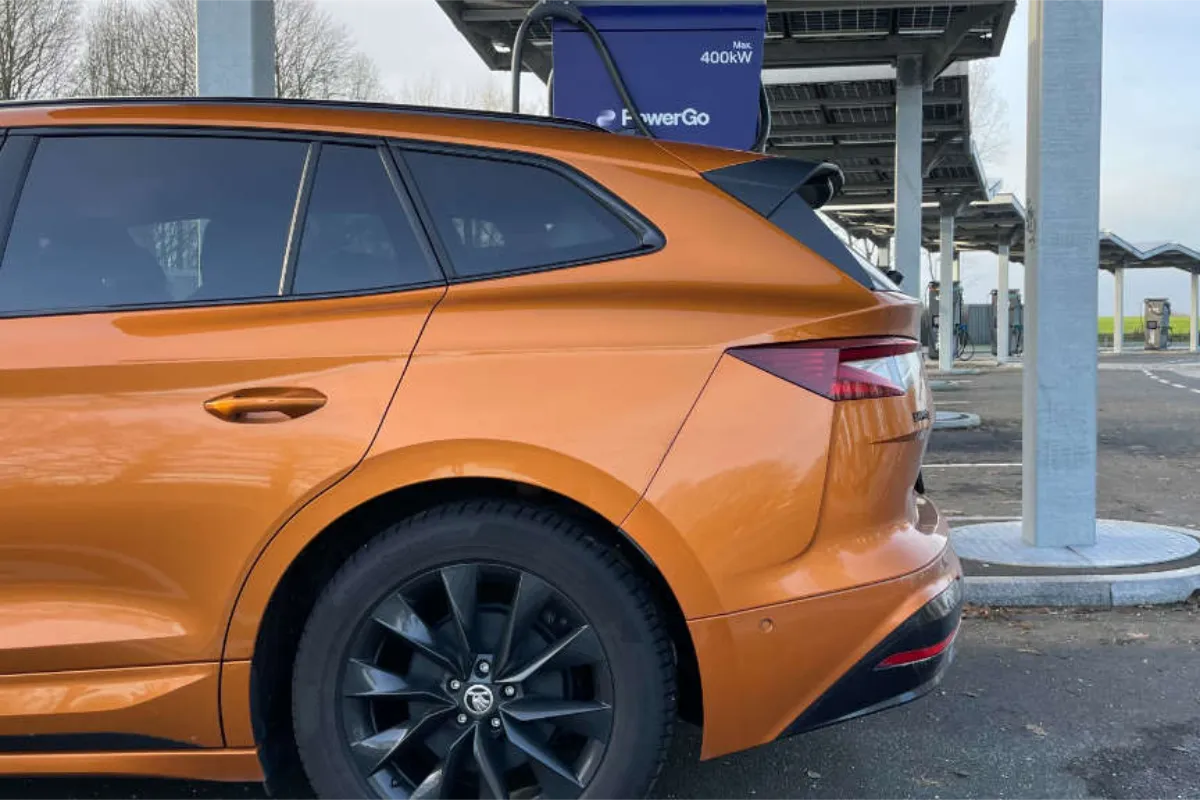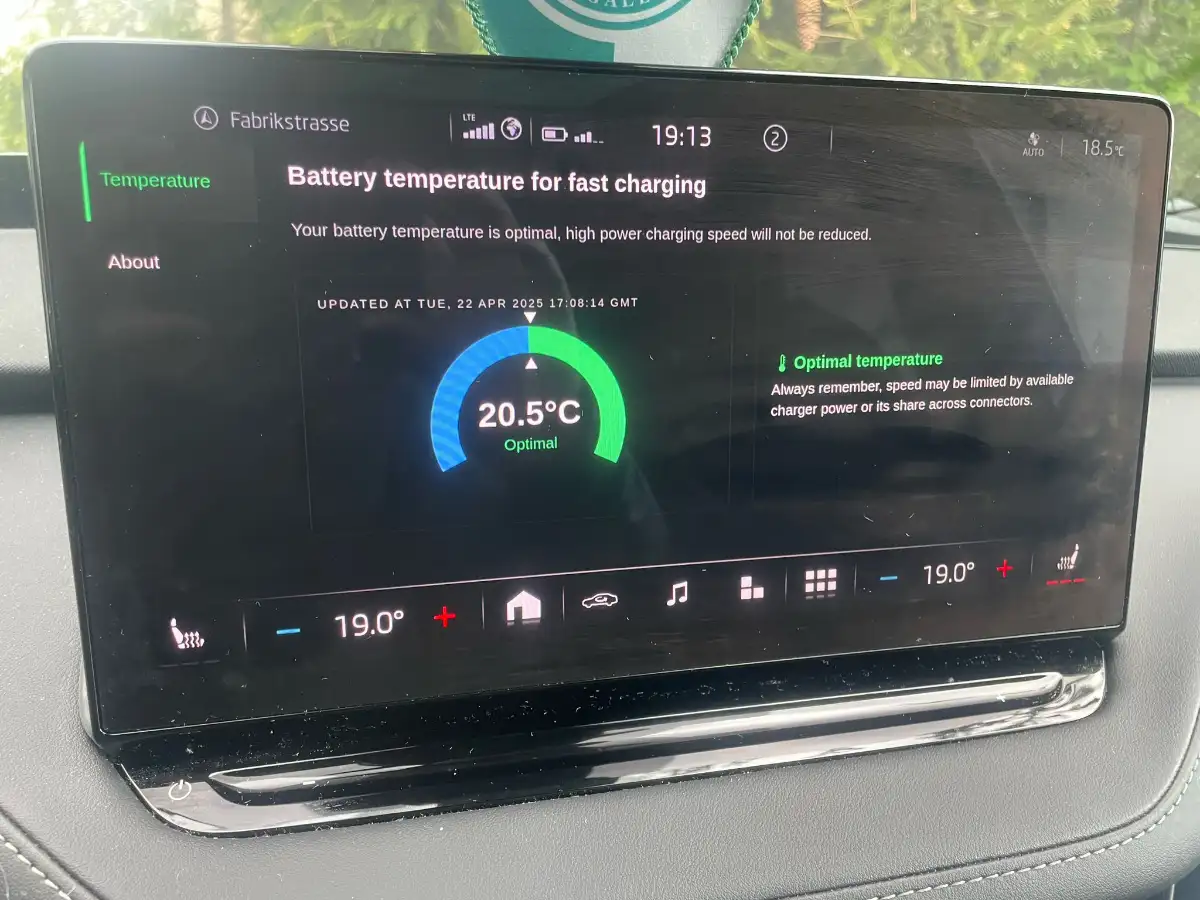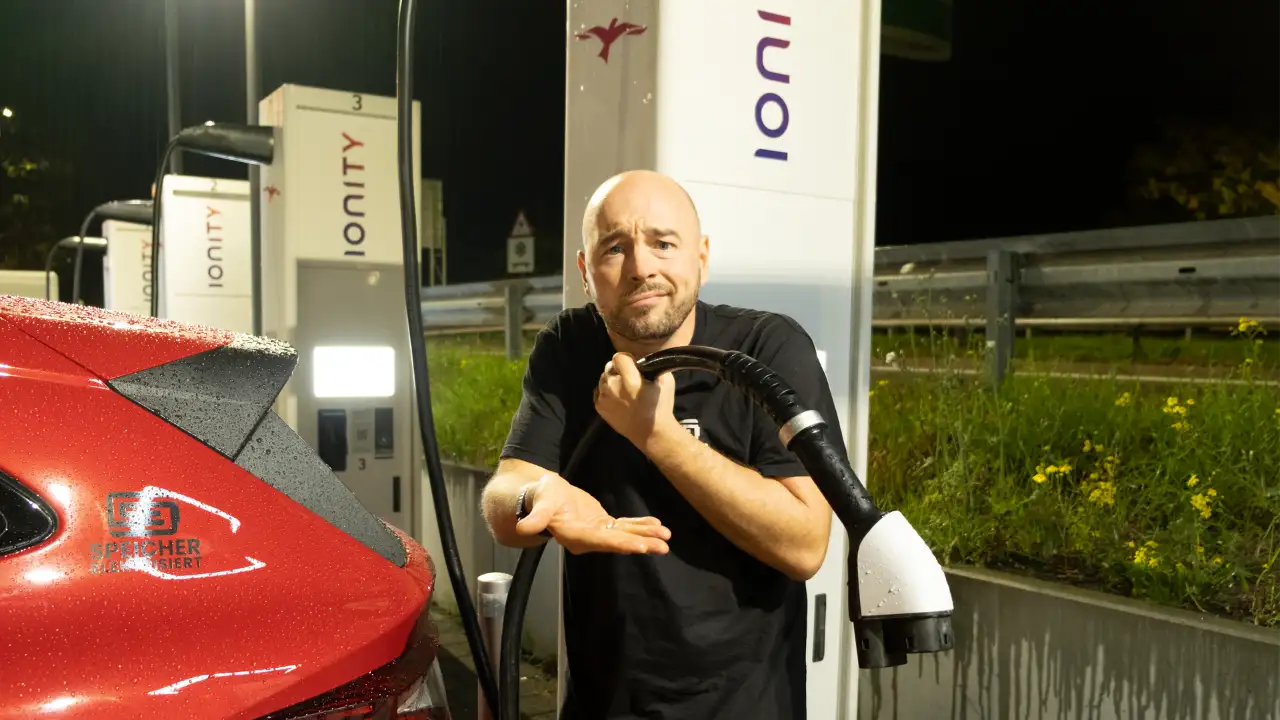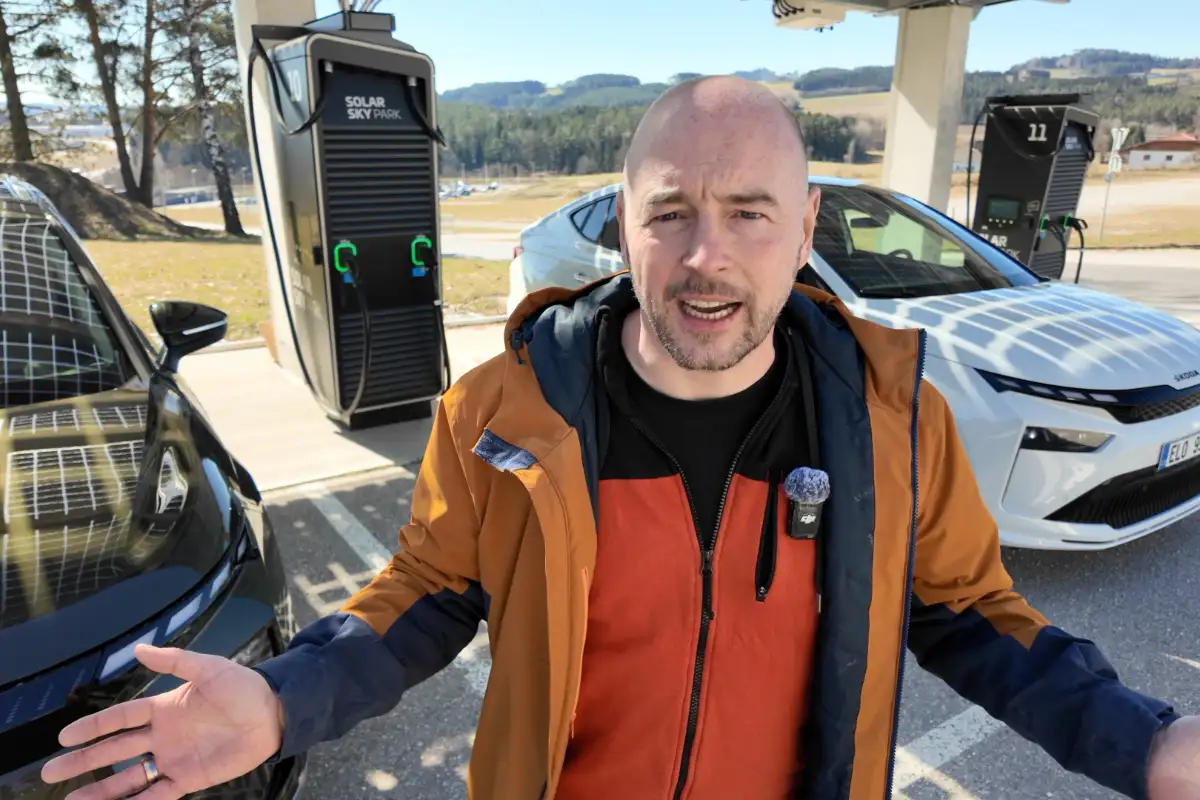For our winter holidays, we travelled to Denmark – in the Škoda ENYAQ. In this new road trip series, we’ll take you along for the ride and compare energy consumption with an almost identical route driven in summer. It’s all about real-world e-mobility: honest experiences with charging, consumption, manual trip planning, and battery preconditioning.
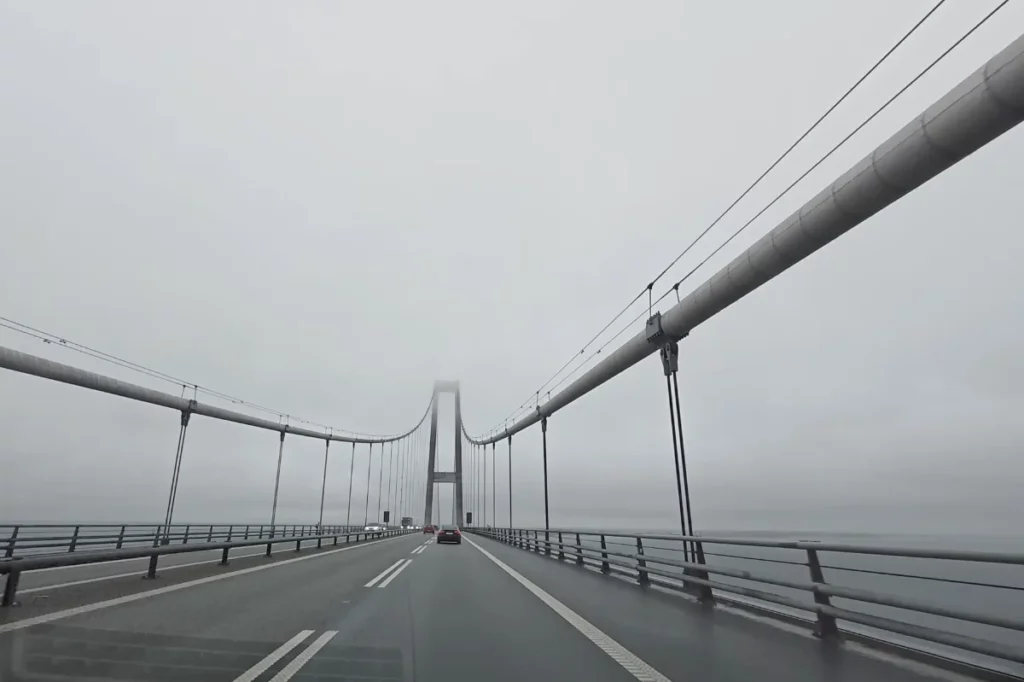
Charging Strategy & Consumption Along the Way
- Manual charging plan: Since there were no software updates (still on version 4.1), the built-in route planner was of little help. We planned the trip manually with notes and predefined charging stops.
- Winter efficiency: Despite winter tyres, cold temperatures, and heavy rain, the initial consumption was lower than expected.
- Charging planning issues: Battery preconditioning did not work as expected – even with manually set charging stops, it was not automatically activated.
- Traffic & detours: Due to road closures and traffic jams, we had to adjust several stops and routes on the go.
Charging Infrastructure in Denmark – A Positive Surprise
- Denmark offers excellent charging infrastructure with many 400 kW chargers.
- Clear pricing directly on the chargers – no hidden costs or complicated tariff structures.
- Ad-hoc payment by credit card – easy, transparent, and fair.
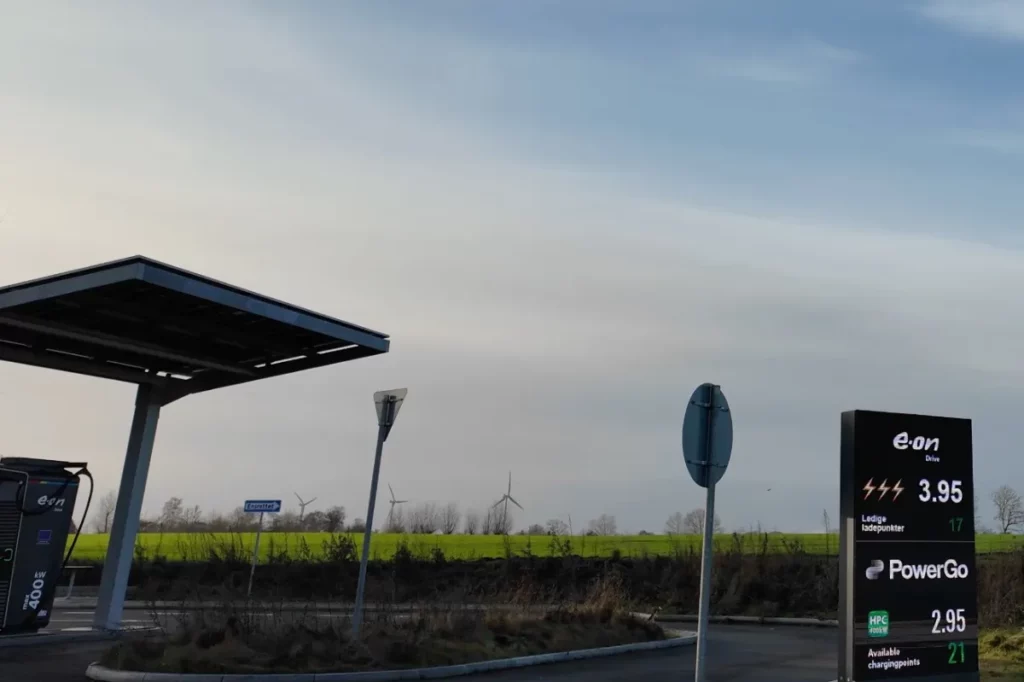
Winter vs. Summer – The Comparison
| Route | Distance | Avg. Consumption | Avg. Speed |
|---|---|---|---|
| Winter (this trip) | 1,237 km | 23.8 kWh/100 km | 95 km/h |
| Summer (reference) | 1,492 km | 18.8 kWh/100 km | 89.5 km/h |
Result: Winter consumption was 26.5% higher – mainly due to cold temperatures, cabin heating, winter tyres, rain, and wind.
Conclusion
Despite the higher consumption, the road trip was smooth and enjoyable – with reliable range and solid charging options.
However, Škoda’s route planning and preconditioning remain weak points, especially for winter driving.

